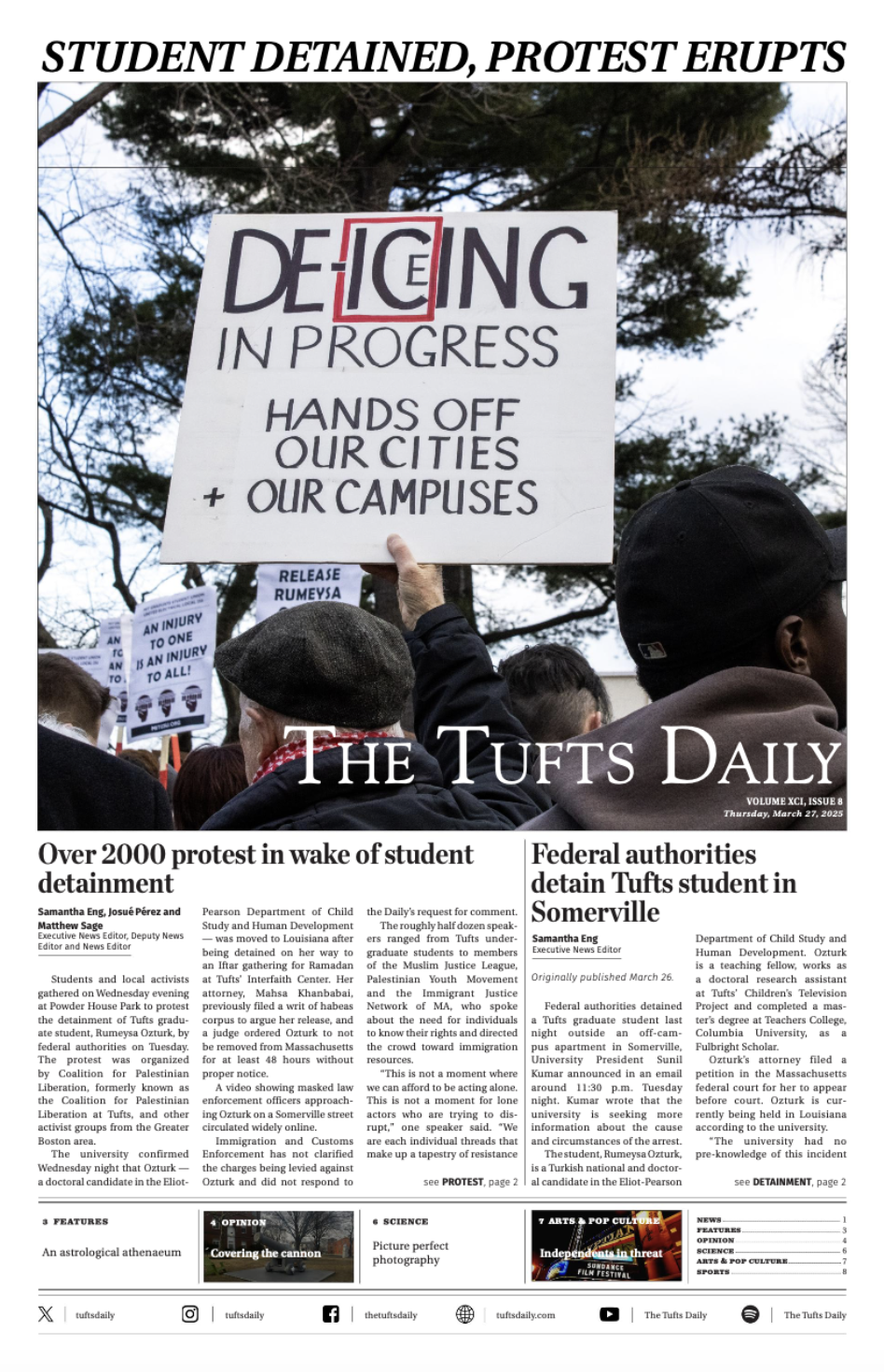A committee of students, professors and administrators has voted to send a proposal to the Arts and Sciences faculty recommending that American Sign Language (ASL) classes be permitted to fulfill part one of the undergraduate language requirement.
Biology Professor Francie Chew, the chair of the Curricula Committee, said that the college's faculty members will discuss and vote on the measure during their meeting on Dec. 10, when they will also consider an array of other agenda items regarding curriculum changes.
The Curricula Committee is comprised of eight voting faculty members, three voting students and three non-voting faculty members. All proposed changes to Tufts' curriculum are referred to the committee for approval before being sent to the faculty for a final decision.
On Nov. 12, the committee held a meeting at which representatives from the departments of child development, romance languages and German, Russian and Asian Languages and Literature (GRALL) weighed in on the proposal. The committee voted to support it a week later, but Chew asked to keep the vote tally private.
Faculty members in the Department of Child Development suggested last March that the committee consider allowing ASL to fulfill the language requirement. Child Development Lecturer Terrell Clark resubmitted a revised version to the committee in September.
"I have no idea why anyone would oppose it," Clark said.
Tufts currently offers three ASL courses. They can be counted toward part two of the language requirement, which can be filled with either language or culture courses. Students can only fulfill part one by taking three classes in one particular foreign language.
ASL was first offered in the Experimental College in the 1970s, according to Clark. It consistently enjoyed student interest and transitioned into the child development department. Eventually, the department began to offer three course levels of ASL.
"Once there were three levels, it made logical sense that students use it as their language requirement," Clark said.
Senior Toby Bonthrone, a Tufts Community Union (TCU) senator who sits on the Curricula Committee, said he was in favor of adding sign language to part one of the requirement. "ASL is undisputedly a language and is accepted as such because it is [already] part of part two," he said.
Bonthrone said that one potential point of dispute is whether ASL is a foreign language, and he argued that it is.
"Foreign doesn't have to be territory-based. It doesn't have to be abroad," he said. "The deaf culture has been quite clearly identified as a culture in its own right ... You can't pick and choose which cultures you don't accept."
Chew, however, said that ASL's western influence may deter some from supporting the measure as a foreign language.
"It is used almost exclusively in the U.S. and Canada. The other languages for which we give foreign-language credit in part one are languages that aren't primarily spoken in the U.S. and Canada," she said.
Bonthrone also said that "political concerns" were motivating some to oppose the measure. He said that faculty members in foreign-language departments may believe that enabling ASL to fulfill part one would deplete enrollment in other languages.
Chew did not believe that enrollment would be a large concern among language departments. The ASL courses have typically been ranked as high-demand classes and have been capped at a small number of students. The introductory-level ASL class is capped at 22 students, Clark said.
Chew added that there were no plans to increase the ASL course offerings if the language was added to part one of the requirement. "Child Development reports it has no plans or budget capability to expand ASL offerings, so that is not going to happen, and certainly not in this budget climate," she said.
Both Professor Hosea Hirata, chair of GRALL, and Professor Jose Antonio Mazzotti, chair of the Department of Romance Languages, declined to comment due to ongoing talks with the Curricula Committee, Dean of Undergraduate Education James Glaser and the Department of Child Development.
Neither Chew nor Bonthrone believes that adding ASL to part one would draw a significant number of students who would not otherwise have taken the course away from other languages.
Chew said the Department of Child Development "is not being besieged at this point ... I don't imagine that someone who's majoring in [international relations] would have any particular interest in taking ASL."
Bonthrone added that allowing ASL to fulfill part one of the requirement would accommodate students who are looking into more domestic fields.
"Some faculty pointed out that this whole international focus can at times be a bit excessive," he said. "Some people are more interested in domestic careers. ASL is quite relevant to doctors, ... social workers, any kind of deaf activists."





